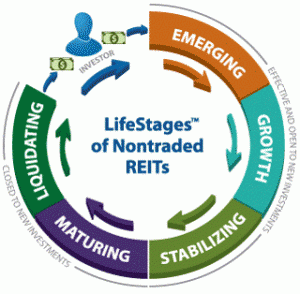Johnathan Rickman | Blue Vault
Alternative investments are often touted as a way for advisors to diversify client portfolios and generate income for investors. But what are alternative investments and what other benefits do they provide? Read on as we tackle these and other basic questions about alts!
What Are ‘Alts’?
Alternative investments refer to a broad category of assets that extend beyond conventional investments like stocks, bonds, and cash. Alts can include private equity, private credit, venture capital, real property, or even commodities like oil and natural gas.
Innovations in fund structures over the years have expanded retail access to alts, which were initially only available to large, monied institutions or accredited investors. Interest in these types of investments has risen as investors seek new ways to boost portfolio returns, reduce risk, and access fresh opportunities, especially during times of economic upheaval.
The emergence of hedge funds in the 1940s and private equity strategies in the 1950s were key developments that helped kickstart the modern-day alts phenomenon. Today, alternative investment strategies such as business development companies and interval funds are a $22 trillion industry, representing 15% of global assets under management.1
The alts market is a strong investment option for advisors. Here are some reasons why:
Investment Benefits
Alts can offer unique portfolio benefits that other types of investments cannot, such as:
• Diversification: Low correlation to stocks and bonds
• Increased portfolio returns and reduced volatility — even in a down market
• A hedge against inflation
• Current income
Due to their limited accessibility, alts may have higher investment minimums and expenses than other types of investments. Alternative assets are also generally illiquid and may involve long investment timelines — factors that may not be suitable for some investors. This is beginning to change, however, as many funds now offer more liquidity to attract alts investors.
The alts market has a multitude of strategies and structures that can provide the committed alts investor with the flexibility they need to balance risk and potential reward.
Professional Advantage
Allocating to alts is a good way for advisors to set themselves apart from the pack. Not only does it attract high-net-worth clients, but it also shows your clients that you think outside the 60/40 box.
Investors are increasingly approaching their advisors about alts, not the other way around. That’s because they’re hearing influential investment managers say what alts backers have been saying all along: In a changing economy, a 50/30/20 portfolio model2 that allocates to stocks, bonds, and alternative assets like real estate and private credit provides the right balance of diversification.
If you’re not sure where to begin, learning about alts and how they work is step one and you’re in the right place! Blue Vault is your singular source for research, insight, and news on alternative investments.
Over the next few weeks, we plan to publish more stories to help bring you up to speed or give you that refresher course on alts you’ve been wanting. We plan to cover the following:
• Types of Alts: Structures, Strategies, and Solutions
• The Alts Ecosystem: Participants and Their Roles
• Alts Lingo for Beginners: How to Make an Informed Pitch
• DSTs and 1031 Exchanges: Real Estate Strategies for Alts Investors
References
1 January 2024: The Next $20 Trillion in Alternative Investments | Chronicles of an Allocator | CAIA
2 Larry Fink’s 2025 Chairman’s Letter to Investors | BlackRock











